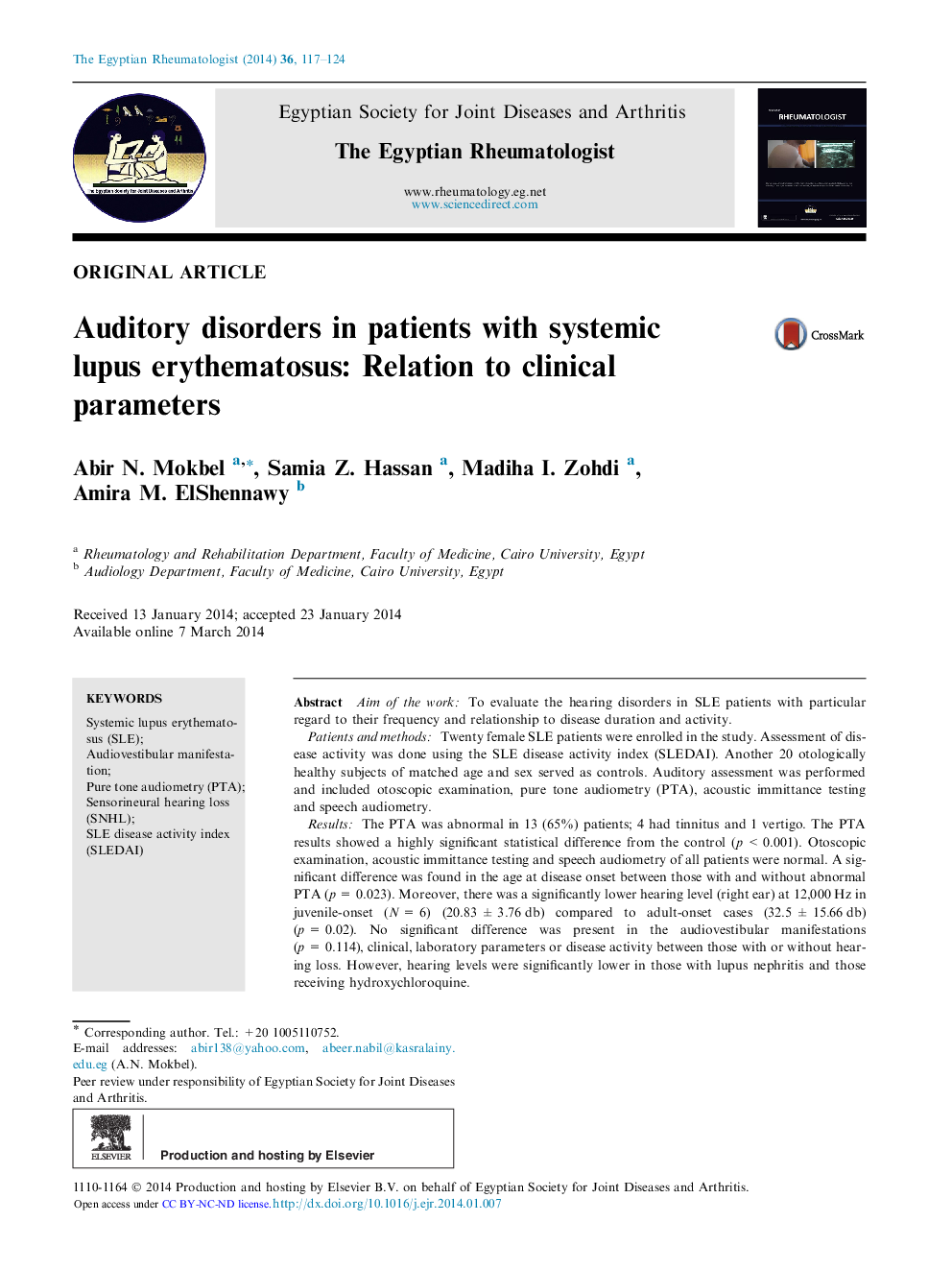| Article ID | Journal | Published Year | Pages | File Type |
|---|---|---|---|---|
| 3348982 | The Egyptian Rheumatologist | 2014 | 8 Pages |
Aim of the workTo evaluate the hearing disorders in SLE patients with particular regard to their frequency and relationship to disease duration and activity.Patients and methodsTwenty female SLE patients were enrolled in the study. Assessment of disease activity was done using the SLE disease activity index (SLEDAI). Another 20 otologically healthy subjects of matched age and sex served as controls. Auditory assessment was performed and included otoscopic examination, pure tone audiometry (PTA), acoustic immittance testing and speech audiometry.ResultsThe PTA was abnormal in 13 (65%) patients; 4 had tinnitus and 1 vertigo. The PTA results showed a highly significant statistical difference from the control (p < 0.001). Otoscopic examination, acoustic immittance testing and speech audiometry of all patients were normal. A significant difference was found in the age at disease onset between those with and without abnormal PTA (p = 0.023). Moreover, there was a significantly lower hearing level (right ear) at 12,000 Hz in juvenile-onset (N = 6) (20.83 ± 3.76 db) compared to adult-onset cases (32.5 ± 15.66 db) (p = 0.02). No significant difference was present in the audiovestibular manifestations (p = 0.114), clinical, laboratory parameters or disease activity between those with or without hearing loss. However, hearing levels were significantly lower in those with lupus nephritis and those receiving hydroxychloroquine.ConclusionPure tone audiometry revealed SNHL in 65% of SLE patients. Absence of audiovestibular manifestations does not exclude inner ear affection. Age at disease onset is remarkably associated with hearing loss in SLE. Lupus nephritis and hydroxychloroquine use are associated with lower hearing levels and possible early hearing loss.
